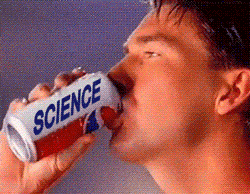There seems to be correlation with grip and effeciency. The less grippy tire getting better effeciency, even with the same same size tire a harder durometer seems to get better wh/mi.
I see this a lot on here, but rotational inertia is not related to rolling resistance at all. An object in motion stays in motion, and all that.
Rolling resistance, as a first approximation on smooth surfaces, is determined by three squishiness-based things:
- Hardness: The further the wheel squishes into the ground, the more “out of round” it becomes, so it’s harder to roll. If you were to draw a force diagram, resistive forces from the contact patch would have more leverage with a softer wheel that squishes more. For pneumatics, this hardness is the tire pressure, and for urethane the hardness is the durometer. More weight squishes the wheel further, and so of course it increases rolling resistance .
- Diameter: For a given amount of squish, a larger wheel is less “out of round” compared to the size of the squish itself. More rounder means more faster.
- Rebound: The process of the contact patch becoming squished and unsquished as it rolls in and out of contact with the ground is analogous to the process of compressing and releasing a spring. The spring stores energy, but not all of it gets released because thermodynamics is a bitch. Some of the energy is lost to the material of the wheel as heat through internal friction. The rebound efficiency of the wheel can be measured by removing all the bearings and junk from it, dropping it on the ground, and seeing how high it rebounds. With urethane, rebound is just down to the chemistry of the compound. With pneumatics, the compound is important, but air is high rebound and rubber is not, so you should have more air and less rubber.
One possible reason people often say that larger pneumatic wheels have more rolling resistance is that they are often run at lower pressures, so they are softer and sink further into the ground.
No.
The choice of inputs and outputs is subjective. 1:1 gearing will produce a more efficient heater.

Please do this ![]()
Seriously though, do it once holding a constant speed and once doing starts and stops, the same number and location of starts and stops.
But on different days, so each time the battery starts off at the same SOC.
Everybody is wrong
correct. if you walk and leave your board fully charged your wh/mi is technically 0
Seriously tho, It depends. In this case it’s like overdrive, better cruising speed, but less punch. But it would be less efficient in conditions that need more torque to the wheels like steep hills and such
Better yet, you can get negative Wh/mi if your board isn’t fully charged at the time you leave it on a charger and walk away.
I feel like that’s a double edged sword, by going faster you’re inherently increasing air resistance at an exponential rate, which is less efficient, much more so than whatever losses the motor has internally. And if you stay the same speed, you get less efficiency from the lower torque.
Ok, on my street bro, if I gear it high, like I do:
18s, 140kv, 165mm tire, 72t/20t = 48mph
But I’m not riding at 48, I’m cruising at 25-30mph, kinda in the middle where it’s efficient 35wh mile
If I did a smaller motor pulley, I would have more torque, but I would be riding near the higher limit of the motors, in a less efficient band (idk what else to call it) 45wh mile
Source please, the way you worded it sounds more like conjecture than hard data. I’ve personally found air resistance much worse, an increase of 3mph uses 3Wh/mi more on my setup, and this is <15mph average so air resistance isn’t even that high.
- source: yeahthatperson - yeahthatperson’s 18s5p 3link street bro experiments 2021-2022:
cruising at 25-30mph
20t better WH than 16t
King County, WA - Seattle, Redmond
So the clarification is that the speed is a constant in my comparison.
Edit: please note this is 18s HV setup
That’s pretty interesting, do you happen to know approximately what duty cycle your motors were running in each case? I have a really low gearing (1:6.2), and I tend to stay pretty high in the range because of it, but my efficiency still seems suspiciously low (like 20-25Wh/mi on pneumies) so I always assumed the low gearing kept it efficient because the rest of the build isn’t too different from what others have here.
It takes a certain amount of mechanical power to go constant speed, say 30mph. Mechanical power is torque Nm times the angular speed of the motor rad/sec. If the angular speed of the motor is lower (bigger motor pulley) then it takes more torque to go constant 30mph. More torque takes more current. More current makes more heat. More heat means more losses and hotter motors. Gearing for higher top speed is less efficient at any given constant speed.
No you can’t generalize like that. The faster the motors is turning the more inductive losses you have. Motors have a efficiency curve that’s starts going down again when turning very fast.
No need to worry about the iron losses below 10k rpm.
If you have stupidly large motors or a 4wd you have very low resistance and higher magnetic losses.
For motors the size we use, losses other than resistive losses will only be significant above 10k motor rpm…
